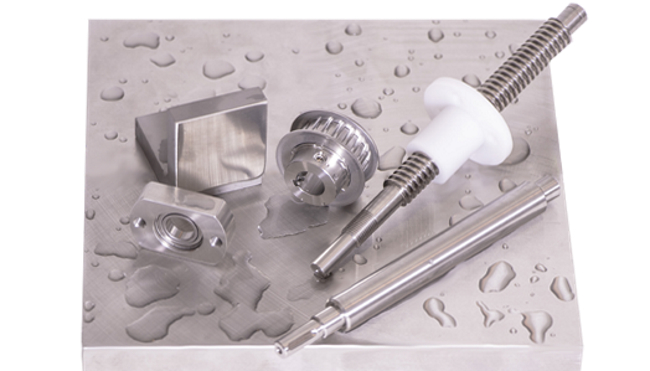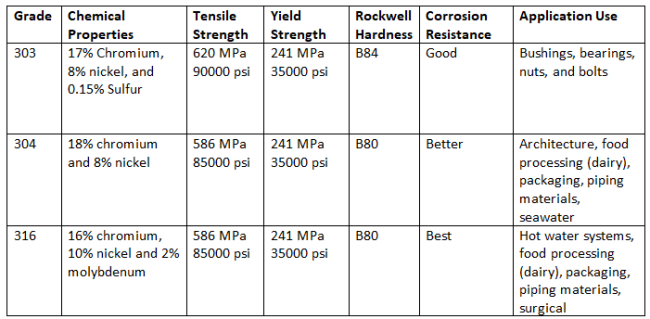
303 vs 304 vs 316 Stainless Steel: What’s the Difference?
Mike McLeod
General Machine Building Misumi
Sponsored by Mitsumi
An overview of stainless steel grades in terms of strength, corrosion resistance, and heat resistance.
 Choosing the correct material is critical to any application especially those designed for wash-down, corrosion resistance, heat resistance or strength. There are a variety of materials to choose from with many different specifications tied to them. Stainless steel is a popular and affordable choice in the packaging industry, especially for food grade applications. In this post, we dissect stainless steel and the different grades of each.
Choosing the correct material is critical to any application especially those designed for wash-down, corrosion resistance, heat resistance or strength. There are a variety of materials to choose from with many different specifications tied to them. Stainless steel is a popular and affordable choice in the packaging industry, especially for food grade applications. In this post, we dissect stainless steel and the different grades of each.
Types of Stainless Steel Alloys
The main types of stainless steel alloys are austenitic, ferritic, martensitic, duplex and precipitation hardening stainless steels. The most widely used and popular is austenitic. Austenitic stainless steel is non-magnetic and its structure allows for the material to be hardened. The subgroups of austenitic stainless steel are 300 and 200. We will review the main grades of stainless steel in the 300 subgroups as these are the most widely used grades.
303 vs 304 vs 316 Stainless Steel
304 stainless is a low carbon steel that contains a minimum of 18% chromium and 8% nickel which gives the metal its alternate name: 18/8 stainless steel. This stainless steel type is oxidation and corrosion resistant. This durability provides ease for fabrication and prevention of product contamination. 304 stainless steel is considered the most versatile and common austenitic stainless steel and is more cost effective compared to 316 stainless steel.
303 is a free-machining grade of 304 stainless steel that contains a minimum of 17% chromium, 8% nickel and 0.15% sulfur/selenium. The small addition of sulfur slightly reduces corrosion resistance but increases machineability which is why you will find its use in fasteners, bushings, bearings and other smaller components. These components require more accurate machining specifications due to the required tolerances. While 303 stainless steel still has strong corrosion resistance, for an added boost, 304 stainless steel is recommended.
316 stainless steel contains a minimum of 16% chromium, 10% nickel and 2% molybdenum. The main difference between 304 and 316 stainless steel is the fact that 316 stainless contains a significantly increased amount of molybdenum. The addition of this transition metal increases 316’s corrosion resistance and also imparts high heat resistance of up to 1600°F. Similar to 304, 316 stainless steel is a chromium-nickel stainless. If the environment has high amounts of corrosive elements and/or materials that would be placed underwater, 316 stainless is a preferred choice.

300 Series Stainless Mechanical Components
Whether your application requires 316 or 304 stainless steel, MISUMI carries a variety of configurable 300-grade stainless steel components including plates, tubing, fittings, pipes, fasteners and rods/bars to fit your requirements. Visit our product spotlight page for MISUMI’s offerings.
https://www.misumiusa.com
